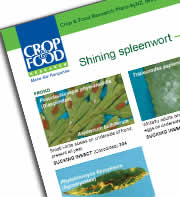|
Biostatus, an explanation of the terms used
The plants and animals found in New Zealand today have very different
origins. They may have:
- evolved in New Zealand,
- arrived naturally since New Zealand separated from other land
masses and still exist in the country of origin, and country
of origin (or may have become extinct there), and
- they may have arrived since the arrival of man as a deliberate
or accidental introduction.
Biostatus information for each species indicates the origins and
occurrence in New Zealand. Various terms are used for both origins
and occurrence. They have been standardised in the Plant-SyNZ™ database
and are described below together with the alternatives in use.
The terms used differ slightly for plants and invertebrates.
Plants
In Plant-SyNZ™ only one term is used for each taxon and it
emphasises origins though in some cases it also covers occurrence.
The Landcare Research NZ Flora database uses separate terms for occurrence
in New Zealand and the origin of a taxon NZFlora.
Endemic. These species occur naturally only in
New Zealand. They are indigenous to this region.
Non-endemic. These species occur naturally in
New Zealand and other regions of the world. The term native is
also used for these species, which are also indigenous to
this region.
Naturalised. These are non-indigenous species
that grow wild in New Zealand. They may also be called exotic,
introduced, alien or adventive species.
They may have arrived accidentally or have been deliberately introduced
to the country. This group includes plants that have "escaped"
from cultivation and have established breeding populations in the
wild.
Cultivated. These are plants that exist only
in cultivation in New Zealand. Some plants that are mainly present
in cultivation also have wild populations and are therefore classed
as naturalised, exotic or exotic (casual).
Overseas. This is for plants that do not grow
in New Zealand, but for which there is information about New Zealand
invertebrate herbivores that are associated with them.
Unknown. This is for species where the biostatus
is unknown. This mainly refers to plants where the genus is known
and the species is not known, and where species in the genus have
variable origins, i.e. some are endemic or native in New Zealand
and some come from other countries.
Invertebrates
Endemic. These species occur naturally only in
New Zealand. These species are indigenous to
this region.
Native. These species occur naturally in New
Zealand and other regions of the world. The term non-endemic is
also used for these species, which are also indigenous to
this region.
Adventive. These are non-indigenous species that
are living in New Zealand. They may also be called exotic,
introduced, alien or naturalised species.
They may have arrived accidentally or have been deliberately introduced
to the country. If they have been deliberately introduced, for
example for biological control of a weed, they may be termed established.
Captive. These are non-indigenous invertebrate
species that are or have been held in captivity in New Zealand
and do not exist in the "wild". The term may include species that
have been released into New Zealand, but have not established.
Overseas. This is for invertebrates that do
not occur in New Zealand, but for which there is information on
their association with indigenous New Zealand plants.
Unknown. This is for species where the biostatus
is unknown. This mainly refers to invertebrates where the genus
is known and the species is not known, and where different species
in the genus have variable origins, i.e. some are endemic or native
in New Zealand and some come from other countries.
Contacts/Feedback
NA Martin 2007 accessed
28-May-2007
Plant-SyNZ database: Reliability score
 |
PDFs can be viewed
using Adobe Reader. |
|


